Blog
Please fill in relevant terms in the 'search the blog' field, like 'drawing', 'water', 'painting' to find relevant posts.
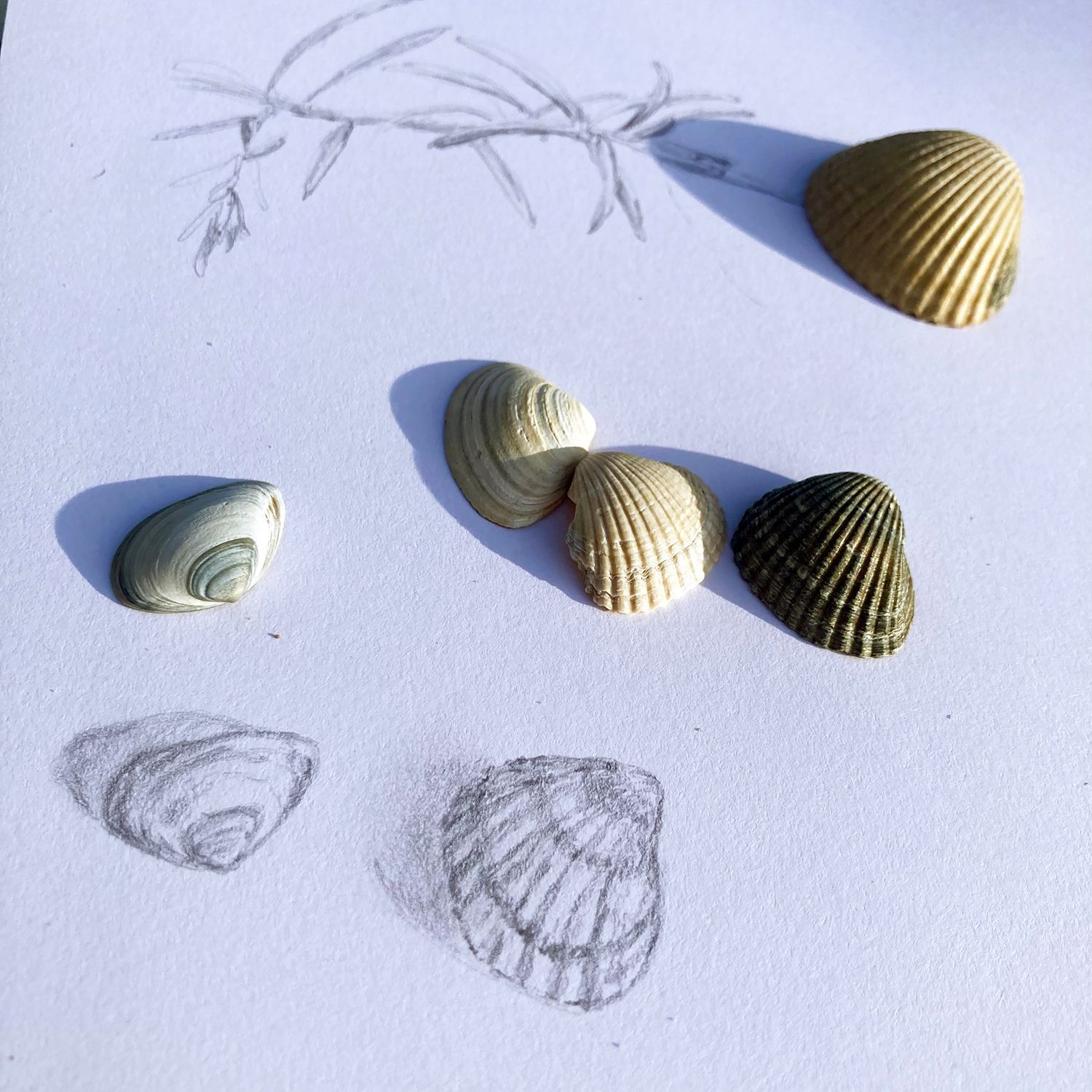
Finally after all the rainfall in spring, the last week of June we had the warm and sunny days we were waiting for. We went a few days to Ouddorp in the Netherlands and visited some of our favorite beaches. I have always lived relatively close to the sea and I grew up spending lots of time on the beach on hot summer days. Thinking of my childhood, I remember all those happy moments I spend watching the sea move on to the shore, bringing new shells to the beach and taking grains of sand back to sea as the water pulled away. Now I know that I was 'Zen seeing' in those moments, completely focused on what I saw and heard, feeling one with the water and the sand, forgetting space, time and even my parents. Sometimes I found myself far away from my parents, unaware that the tide had secretly encouraged me to follow the flow of the water and stray away. I still love to stare at the sea coming on to shore, find shells, watch small crabs and feel my feet in the water. My inner child awakens and feels as happy as it can be. Nowadays I bring my sketchbook and if I feel like it, I will draw. If I don't feel like it I bring the shells or other things I will find home and draw them at a later moment.

My interest in crystals almost exploded a few years ago, after a trip to Ireland awakend my interest for ancient stones and a few months later Lee Harris, a channeler of a collective called 'the Z's' started to talk about his Labradorite crystal that helped him to connect to his guides. I never heard of Labradorite before, but the day after I bumped into Labradorites in a shop and since I don't believe in coincidences like this, I decided to buy the stone from the photo above and see what happens. It was the first crystal of my now my rapid growing collection of stones, but I know that this particular Labradorite was a specific good match for me. It absorbs my energy very fast -at least that's what it feels like- and sometimes I keep the stone in my hand during my sleep. Believe it or not- I have been able to turn down sudden hand eczema attacks at night by holding the stone in that particular hand as soon as I feel the first itches. The overload of energy in my hand that seems to be the cause of this inflammation is able to flow into the stone and my hand cools downs and the itching goes away .
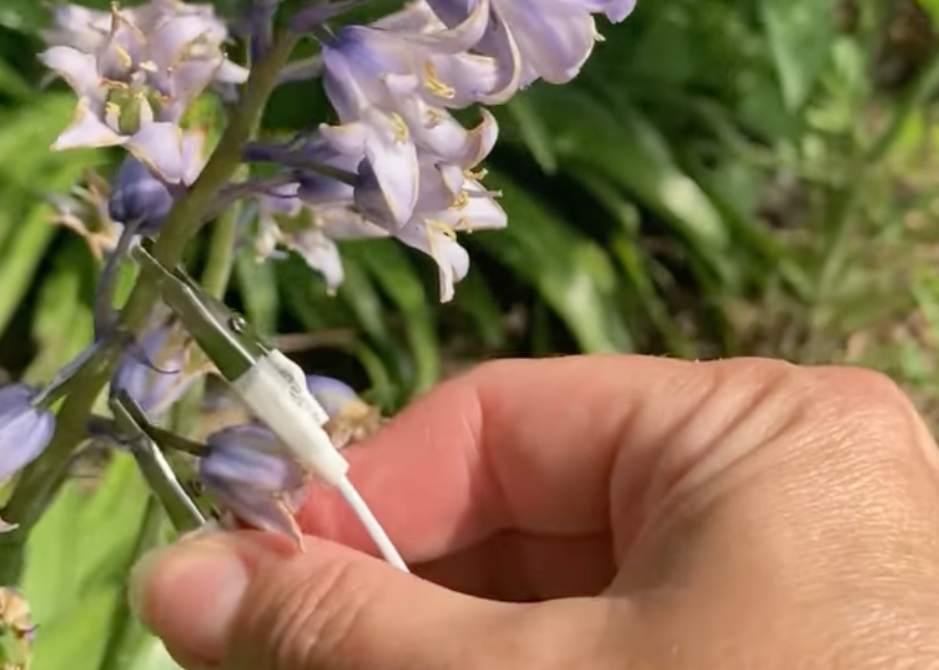
The first time I read about plant music was more than a decade ago. It was an article about the Damanhur community in Italy. As I forgot the name of the community I didn't learn more about it until the community appeared in more mainstream media and a musical friend bought Damanhur's 'Music of the Plants' device. I discovered that there are more devices on the market that translate plantactivity into sound and I bumped on the device in the video that I use, called Plantwave . It's quite hard to tell story without mentioning commercial details about the devices. I have become a affiliate partner of Plantwave but that is not why I am promoting listening to plant music. For me, it's is about the fun of getting into nature and communicating with the plants and trees you encounter. It's also lot's of fun to connect the plants in your house or garden, the flowers of your bouquet or for example your Christmas tree. For me, the most magical is that you can hear the effect you have on the plant by touching it or talking to it, see also in the video below. My plants have become more like pets to me and it definately stimulated me to take better care of them. If you are enthusiastic like me, I do recommend to get a device if you can afford it. I also recommend to dive into the differences between al the devices available on the market, because they work quite different. If you ever decide to purchase a Plantwave device of course I would be thankful if you can use this affiliate link. More plant music recordings can be found on my Youtube channel .

The first time I saw the documentary 'Secret of Water' on Gaia.com it blew my mind. The documentary shows the findings of dr. Masaru Emoto of the effect our words, intentions and music have on the molecular structure of water. I placed a YouTube video below to show you why the work of dr. Masaru Emoto intrigued me so much.

Tomorrow exactly one year ago - May 11th 2022 - we finally visited Boyne Valley, two years after our original booking in 2020. It probably needs no explanation why the trip was cancelled. We were actually the first tourists to visit Ireland after the Covid-19 lockdowns. The reason we booked the trip in 2020 was to visit the ancient monuments that are scattered in the valley and get inspired to write a new book. Heavily disappointed that we couldn't go in 2020, we were rather suprised when a Dutch publisher asked us just some months later to write a book about my watercolor technique. So the trip was cancelled but a book was published in 2021 (named "watercolor in simpele stappen" in Dutch or "watercolor in simple steps" in English). There was only one thing: I booked a private tour with Anthony Murphy and I was still very exited to go. Besides that we wanted to update our Zen drawing books with new chapters and drawings. So as soon as possible we went for an inspirational trip and celebrate my birthday on May 12th in Ireland. You may like to know that I visited other parts of Ireland years ago. One of my best discoveries then was the banoffee pie! This pie, nowadays seen more often on Dutch menu's too, was something new to me and incredibly delicious. I asked my foodie-blog-friend Anja to help me out with a recipe. She wrote a lovely blod post (sorry the recipe is only in Dutch but hurray for google translate) and since then I make my own Banoffee pie every year on my birthday! I had no doubt that this year the tradition would continue. It was just two days later that I found a piece at the Newgrange visitor centre.
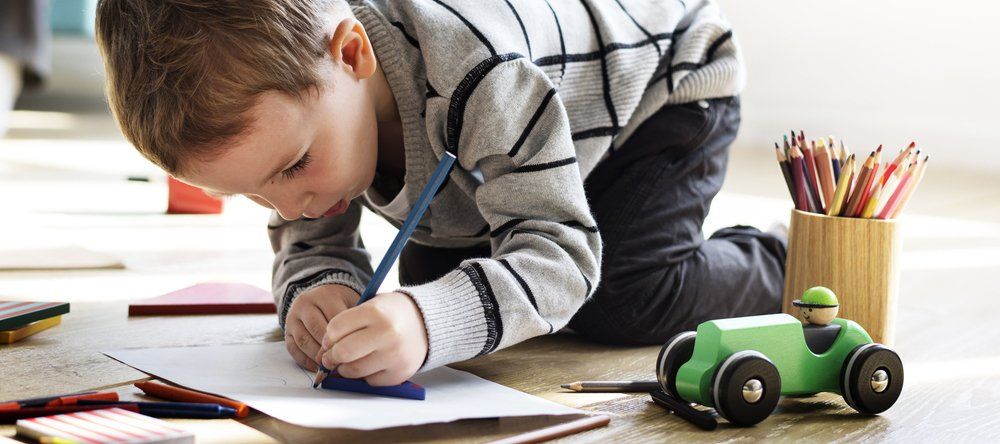
When my daughter turned seven, I noticed that her interest in drawing increased, so I decided to find out what blind contour drawing could do for children of her age. I asked for permission to teach the method to her class mates at school and one day about 30 children, boys and girls, aged 6, 7 and 8 joined my class on one condition: that they would try to draw in silence. I divided them into small groups, gave them magazines with lot's of animal photos and allowed them to pick whatever they wanted to draw. Then I had them draw in silence for about 1 hour. Before I continue it may be interesting to tell a bit about children and drawing. As Betty Edwards explains in her book ' Drawing on the Right Side of the Brain' children go to stages in the development of drawing skills. Children use drawing to get a better understanding of the world around them, to understand symbols, to tell stories and work out problems. The older they get, the more they strive for creating realistic drawings, adding more details, drawing in perspective, creating 3d illusions and adding shadows and light. We probably all remember our struggles with drawing exactly what we see during this stage. The stages show that most children go through a similar development and move from more basic drawings consisting of symbolic shapes like circles and cubes to realistic complex drawings. I also conclude that they move from drawing mostly their inner (fantasy) world to becoming more aware of the actual world around them. It is a common sight: a young child that is totally focused on his or her paper while drawing. Just like in the photo above, with their face as close as possible to the paper and sometimes their tongue sticking out. The creation on paper is all that seems to exist. In order to create a realistic drawing the focus needs to shift more to the external world. I have a wonderful book by Gregg M. Furth 'The Secret World of Drawings' that shows that children's drawings also show many symbolic information that reflects unconscious thoughts and emotions. All in all I think drawing is an extremely important skill for children to learn and understand the world and to express themselves. For us, their drawings are very important to get a glimpse of what is happening in their inner world. It's a shame that drawing is not seriously offered in many primary schools anymore (at least here in the Netherlands). That's why I took my chance to educate my daughters class mates. The children in the class were mostly 6-8 year old and were probably moving from 'the landscape stage' into the 'stage of complexity'. Their drawings were becoming already more detailed and a bit in cartoon style. Betty Edwards speaks in this stage of (culturally based) differences by sex, with girls drawing things like butterflies and flowers and boys cars, airplanes and boats. Since the children weren't used to getting any drawing instructions in school, I did see this in my class too. Of course they were quite excited about being together in a different class room with a parent as a teacher. My first challenge was to bring the energy down a bit without loosing their enthusiasm. I wanted to teach them the basics of blind contour drawing and see if this had any effect on their type of drawing. So I first let them draw freely whatever they wanted before introducing the exercise.

During my study in Health Psychology at the university of Leiden in Holland, I wanted to find out if I could 'marry' psychology, creativity and art as a way to help people create better lives for themselves. So I started to gather information about several types of art therapy, took art classes and began to further develop my professional skills in painting, drawing and photography. Not long after I graduated I was given some books that seemed to be just what I was looking for all those years at university. First I discovered the work of Betty Edwards, who was the first person to connect drawing to the way our brain works and somewhat later a book by Frederick Franck made me feel as if everything finally fell into place. My study, my love for painting and drawing and my growing interest in Buddhism and meditation it all came together into this drawing technique I now call Zen drawing. I started to draw with a different purpose: instead of only being focused on creating wonderful art, my focus shifted to creating a wonderful drawing experience. I wanted to become more aware, more relaxed and more open minded. Since Zen drawing helped me to find more balance and more joy in my work and in my life, I started to wonder if Zen drawing would have the same positive effect on others. So I took the bull by the horns and decided to start teaching others how to use this Zen drawing technique to improve their drawing skills and their peace of mind and I have been enjoying teaching ever since. One day I was asked to teach Zen drawing in a Health care center where I was asked to work with people with a variety of psychological problems. It was there that I realized that this Zen drawing technique really was an interesting method to increase the feeling of psychological well being of people in healthcare. Please note that my observations and conclusions are based on my own personal experience with students and are not based on a scientific research.
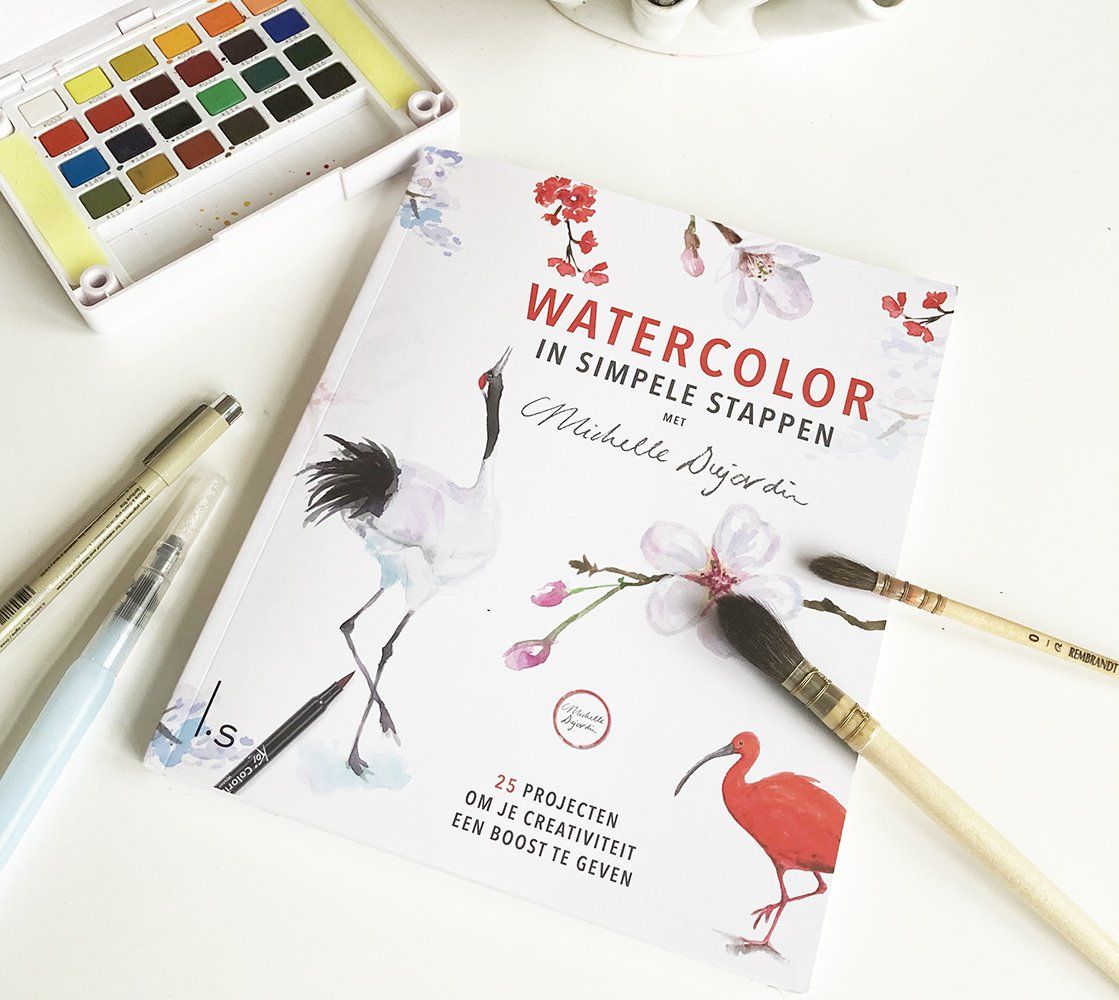
ENGLISH: Hurray!! My new book arrived! The project I have been working on a great deal of the 'Year of Covid' has been published! The Dutch book 'Watercolor in simpele stappen' (Watercolor in simple steps) is available in bookstores and online shops. And of course here in my own webshop. DUTCH: Hoera!! Mijn nieuwe boek is er! Het project waar ik een groot deel van het 'Coronajaar' aan gewerkt heb is gepubliceerd! Het boek 'Watercolor in simpele stappen' ligt vanaf nu in de winkels zodra deze weer open zijn. En natuurlijk is het boek ook te bestellen op internet, onder andere hier in mijn eigen winkel.
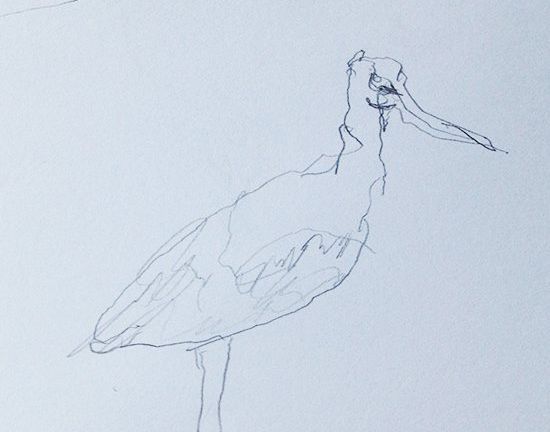
Early 2016 my then 65 year old father got a series of brain attacks that affected his live tremendously. His left brain got damaged in 7 different areas and he had failure symptoms on his right side of the body, making him unable to walk or use his hand and right arm. Besides this, his memory failed, he could not read or write, and his sight was highly affected due to Hemianopsia. As a daughter and psychologist, it gave me a profound insight in the functioning of my father's brain: he could spell words, but was unable to read them. He could write letters in the air with his finger, but he could not recognize letters when he saw them on paper. He could describe animals, but he didn't recognize them on pictures. It was my father's worst nightmare since he loved to walk in nature and read a book. Basically, the world as he knew it fell apart and he had to rebuild his life all over again. Luckily for me and my family, he received great care in a rehabilitation center and made great progress in a short period of time. He slowly learned how to walk and he began to recognize written words and animals again. Besides that he had to learn how to write all over again.
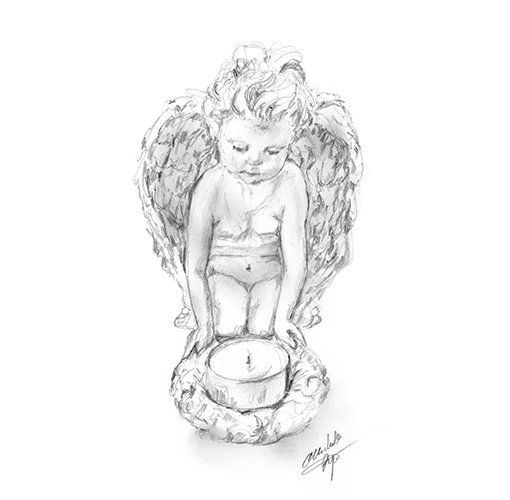
After a long period of staying at home and forced social distancing, we could finally make our first trip in months last weekend. Since we live in a small apartment in one of the most most densely populated parts of the Netherlands, we were happy that one of our favorite Airbnb locations was still available for the weekend. Diana, the lovely owner of this small detached house -that was once built for medical staff and lies just outside Roermond close to the protected forests of the 'Meinweg'- offers a warm welcome every time we visit here. The huge garden feels more like a forest and attracts many birds, squirrels, moles and even a fox. Besides that, you will find many statues made by different African artists in her garden. These give th e garden the appearance of a gallery, museum and sculpture garden all in one.


